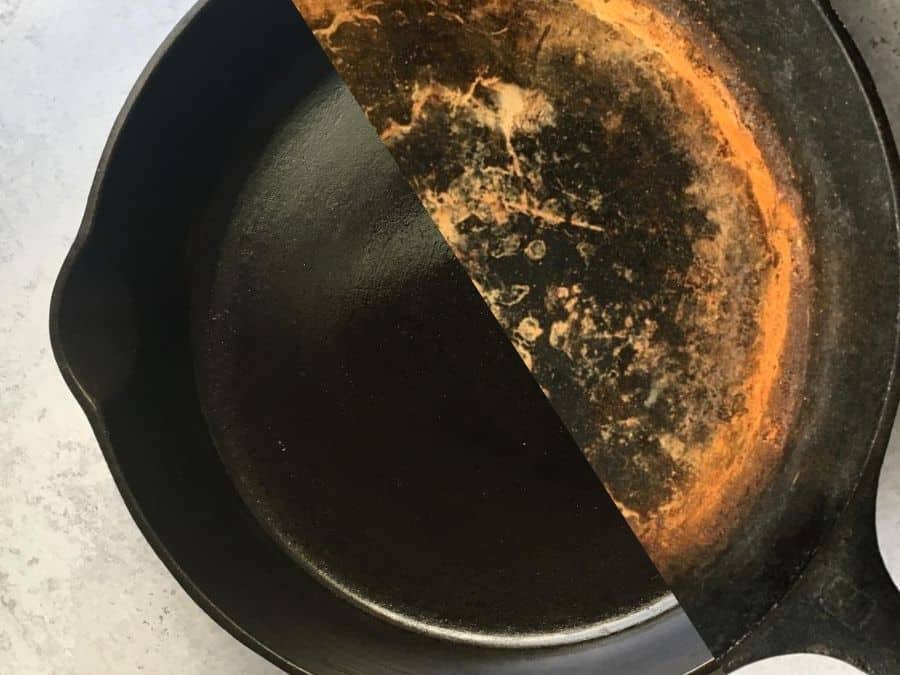Many times people will see a cast-iron pan that's rusty and think it's beyond repair. The truth is, as long as it isn't warped and doesn't have any cracks or major pitting, it can be brought back to life, with a little know-how.
The directions below are only to revive a rusted, scaled pan that needs to be re-seasoned from scratch. Do not apply these methods to pans that aren't rusty. For those, just use lots of salt and elbow grease.
METHOD 1: Start by boiling some water in the cast-iron pan to lift up any basic grime or scaling. Next, use a scrubbing pad to clean off the rust and carbonization. If you have an orbital hand sander, try that, too. That should be all you need. Wash with hot soapy water before seasoning.
METHOD 2: If the first method doesn't work, your next option is (while wearing gloves and following the manufacturer's directions for use) to spray a light coating of oven cleaner that contains Ive all over the pan, inside and out. Cover completely with plastic wrap and place in a paper bag, then in a rubber tub. Let the pan rest, somewhere warm, for up to 3 days. Lye is strong, so keep an eye on the tub and make sure the cleaner hasn't eaten through it.
After that time, and while wearing gloves, unwrap the pan in a well-ventilated area. The grime should be softened; if not, apply another coating of cleaner, and wait another day or so. When the oven cleaner has worked, use a scouring pad to scrub away the grime. When it's back to the original matte color, wash with hot soapy water, season again, and use!
METHOD 3: If you're interested in trying a more natural method, there is always molasses. Make a solution of 1 part molasses to 9 parts water, and soak the pan in the solution for 3 weeks in a warm place. As with lye, the molasses can eat through the container; keep an eye out for leaks. At the end of that time, the molasses may have fermented slightly. Don't worry.
Rinse the pan off, give it a salt scrub, and all of the rust should be gone; then season as if it were new.
ABOUT SALT IN RECIPES
Salt types and amounts are not usually specified. You can use table or kosher salt for any of the recipes, unless specified. Just add salt to your taste. The exception to that rule is for baking. Always follow the amounts prescribed for baking, and use table salt. Kosher salt crystals are large, and the amount of salt in a tablespoon of kosher versus table salt can vary widely.

